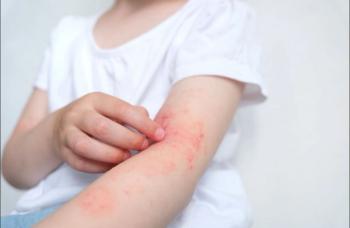
Prenatal Pesticide Exposure Delays Mental Development
NEW YORK -- Inner-city children exposed in utero to high levels of a now-banned pesticide had significantly greater delays in mental and psychomotor development than peers with low prenatal exposure, investigators reported.
NEW YORK, Dec. 7 -- Inner-city children exposed in utero to high levels of a now-banned pesticide had significantly greater delays in mental and psychomotor development than peers with low prenatal exposure, investigators reported.
Children born to mothers who had been exposed to high levels of Dursban (chlorpyrifos) had a fivefold greater risk for delays in psychomotor development, and a nearly 2.5-fold greater risk for delayed mental development, reported Virginia A. Rauh, Sc.D., at Columbia University here, and colleagues.
The interim results of a study on the effects of prenatal exposure to Dursban on three-year neurodevelopment and behavior in a sample of inner-city minority children were reported by Dr. Rauh and colleagues at the National Center for Environmental Health in Atlanta in the December issue of Pediatrics.
Until it was banned for residential use by the Environmental Protection Agency in 2000, Dursban was among the most widely used agricultural and indoor pesticides, found in an estimated 20 million American homes.
"Before the ban, residential use of chlorpyrifos was particularly heavy in New York City," the investigators wrote. "For example, during 1997, the amount of the insecticide applied by licensed applicators in New York City exceeded the amount applied in any other county in New York State, including agricultural communities."
Dursban is an organophosphate, a class of insecticides that can cause both acute and subacute toxicity. They work by disrupting acetylcholinesterase, the enzyme that controls the neurotransmitter acetylcholine, resulting in overstimulation of nerves and muscles in effector organs.
Organophosphates are absorbed by inhalation, ingestion, and through skin penetration, and can cause symptoms that include headache, hypersecretion, muscle twitching, nausea, diarrhea, respiratory depression, seizures and loss of consciousness.
In the current analysis, the investigators evaluated the neurotoxicant effects of prenatal exposure to Dursban in 254 of the children, who are part of an ongoing prospective study through the first three years of their lives. The study measured cognitive and motor development at 12, 24, and 36 months of age using the Bayley Scales of Infant Development and II, and child behavior at 36 months using the Child Behavior Checklist.
The development measures were compared with levels of the pesticide in plasma extracted from umbilical cords.
The authors found that children with high exposure, defined as a Dursban level of more than 6.17 pg/g plasma, on average scored 6.5 points lower on the Bayley Psychomotor Development Index (P=0.03) and 3.3 points lower on the Bayley Mental Development Index at age three (P=0.06), compared with children with lower exposure levels.
They also found that "the developmental trajectories for psychomotor development index and mental development index scores confirmed that adverse cognitive and psychomotor effects increased over time, and these effects were present in both Dominican and black subjects, which supported the main conclusion of the study."
In addition, children with high levels of prenatal exposure to the pesticide were significantly more likely than children with low exposure to score in the clinical range on test for attention problems, attention deficit hyperactivity disorder, and pervasive developmental.
In multivariate tests controlling for potential confounders such as including race/ethnicity, gender, gestational age, maternal IQ, low maternal education and home environment, pesticide exposure remained as the best explanation for negative effects on mental and psychomotor development delays, the authors noted.
"The adjusted mean 36-month Psychomotor Development Index and Mental Development Index scores of the highly and lower exposed groups differed by only 7.1 and 3.0 points, respectively, but the proportion of delayed children in the high-exposure group, compared with the low-exposure group, was five times greater for the Psychomotor Development Index and 2.4 times greater for the Mental Development Index, increasing the number of children possibly needing early intervention services," they wrote.
The study was supported by grants from the National Institute of Environmental Health Sciences and from several charitable foundations. The authors had no financial disclosures.
Newsletter
Enhance your clinical practice with the Patient Care newsletter, offering the latest evidence-based guidelines, diagnostic insights, and treatment strategies for primary care physicians.


















































































































































































































































































